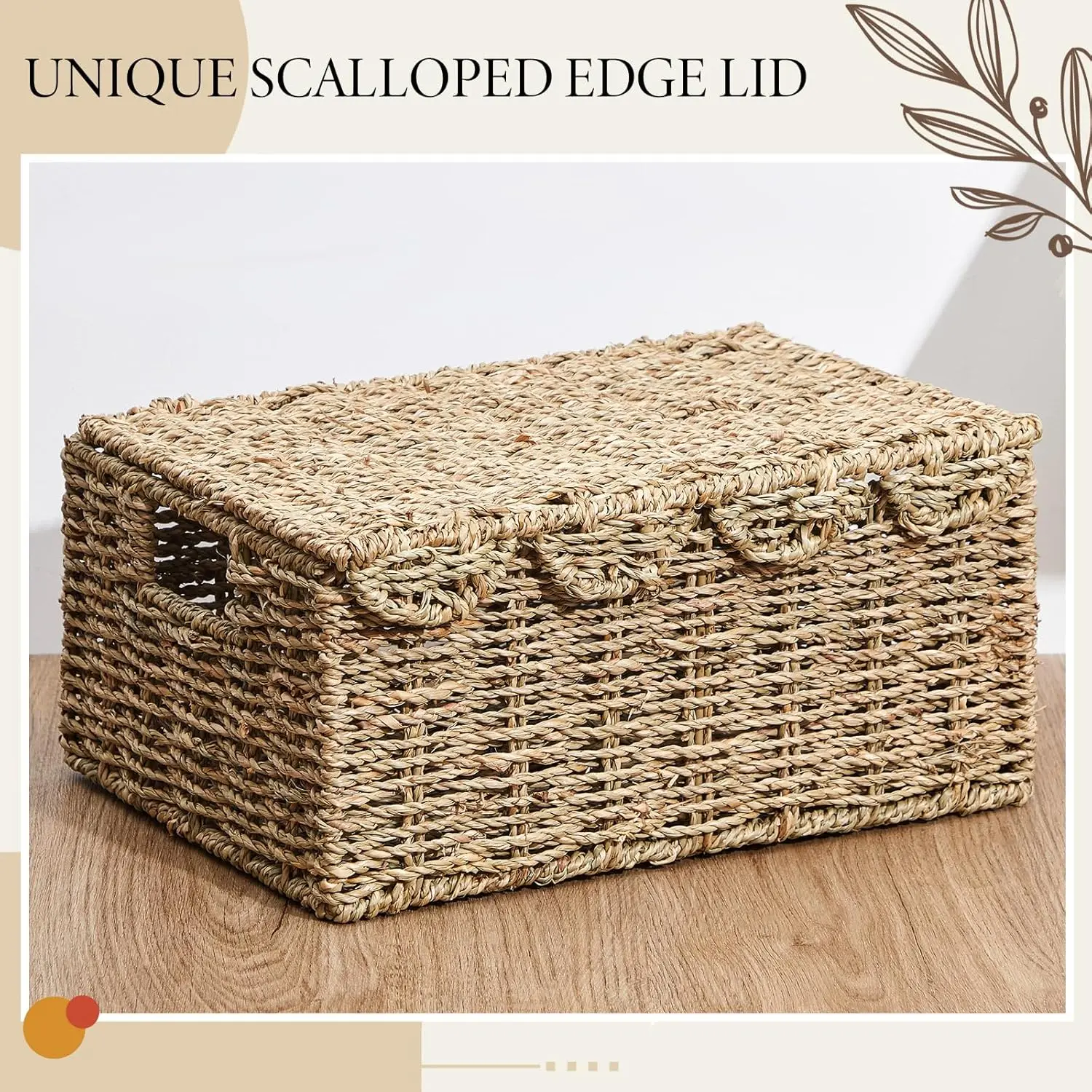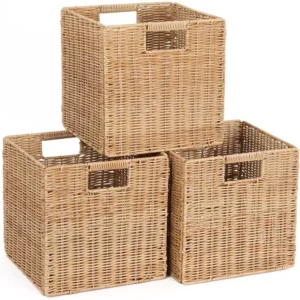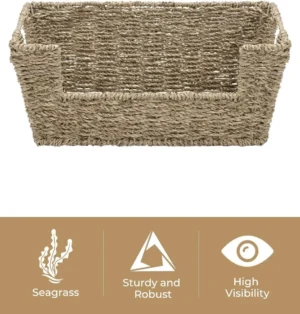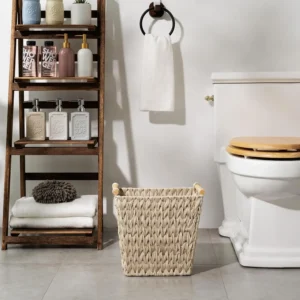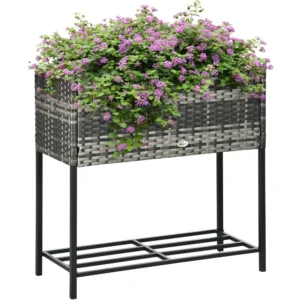Introduction: Wicker’s Timeless Allure in Today’s Modern Home
Wicker has undergone a remarkable transformation in the world of interior design. Once relegated to sunrooms and outdoor spaces, this versatile material has emerged as a sophisticated element in the most stylish contemporary homes. The natural texture and organic warmth of wicker create a perfect counterbalance to the clean lines and sleek surfaces that define modern interiors.
Today’s wicker pieces offer the perfect blend of form and function, with refined silhouettes that complement rather than compete with contemporary aesthetics. What makes modern wicker truly special is its ability to add character and depth to spaces that might otherwise feel cold or impersonal.
For environmentally conscious homeowners, wicker’s sustainable nature provides another compelling reason to incorporate this material into modern living spaces. Made primarily from renewable resources, high-quality wicker pieces align with today’s focus on responsible consumption.
Throughout this guide, we’ll explore how to:
– Select wicker pieces that enhance contemporary spaces
– Create balanced compositions using wicker’s unique texture
– Integrate wicker thoughtfully across different rooms
– Avoid common styling pitfalls for a sophisticated result
The organizing laundry wicker baskets approach demonstrates how functionality and style can coexist beautifully in modern homes. Whether you’re looking to make a bold statement or simply add subtle textural interest, wicker offers endless possibilities for harmonizing wicker minimalist design principles.
Understanding Contemporary Wicker: Key Features That Define Modern Wicker Style
Modern wicker departs significantly from its traditional counterparts through several distinct characteristics. Today’s contemporary wicker pieces feature:
- Streamlined silhouettes with architectural interest
- Precision weaving patterns that create visual rhythm
- Tailored proportions that complement modern furniture scales
- Refined finishes ranging from natural to matte black
- Thoughtful integration of mixed materials (metal frames, glass tops)
The difference between outdated wicker styles and their modern counterparts lies primarily in the execution. Where traditional wicker might appear bulky or ornate, contemporary wicker embraces restraint. The focus shifts from decorative detailing to celebrating the inherent textural quality of the material itself.
When selecting modern wicker pieces, look for tight, consistent weaves, strong structural integrity, and thoughtful design that transcends trends. Quality is immediately apparent in the uniformity of the weaving pattern and the stability of the construction.
The wicker family encompasses several related materials, each with unique characteristics:
– Rattan: The solid core material with exceptional strength and versatility
– Cane: Flat, ribbon-like material often used for open weaves and chair seats
– Bamboo: Hollow structural material offering lightweight strength
– Synthetic options: Weather-resistant alternatives with modern applications
Rattan basket storage solutions modern homes showcase how these traditional materials can be reimagined for contemporary settings. For those looking to start their collection, our rattan baskets offer excellent examples of modern wicker craftsmanship.
The Art of Balance: Achieving Harmony with Wicker in Modern Spaces
The secret to successfully incorporating wicker into modern interiors lies in thoughtful balance. Wicker’s organic texture creates natural tension when placed against sleeker materials, resulting in visually engaging compositions that feel intentional rather than accidental.
Consider pairing a sculptural wicker chair with a minimalist glass side table, or placing woven storage baskets against smooth concrete floors. These juxtapositions highlight the unique qualities of each material while creating a cohesive overall impression. The key is allowing the textural contrast to become a deliberate design element.
When distributing wicker throughout a space, think about visual weight. A substantial wicker piece (like a pendant light or accent chair) often works best as a focal point, balanced by more understated modern elements surrounding it. This approach prevents the space from feeling overwhelmed by texture while still allowing the wicker to make an impact.
Temperature balance also matters—wicker’s inherent warmth can soften the coolness of materials like steel, glass, or polished stone. This interplay between warm and cool elements creates depth and nuance in contemporary interiors.
The approach of using wicker in every room requires thoughtful consideration of how the material’s natural properties complement other elements in each space. Rather than creating “wicker rooms,” aim for balanced integration where the material enhances rather than dominates the aesthetic.
Strategic Color Palettes: Creating a Modern Context for Wicker
The color scheme surrounding your wicker pieces dramatically influences how they’re perceived in a modern context. Strategic color selection can elevate wicker from casual to sophisticated:
For Natural Wicker:
– Cool whites and grays create crisp, Scandinavian-inspired contrast
– Muted sage, navy, or terracotta add depth while maintaining sophistication
– Black accents provide grounding and contemporary edge
For Dark/Black Wicker:
– Warm whites and creams create subtle sophistication
– Jewel tones like emerald or sapphire create luxurious drama
– Brushed brass or copper accents add warmth and refinement
In minimalist spaces, wicker serves as an ideal neutral element, adding textural interest without competing with the restrained color palette. This approach works particularly well in monochromatic schemes where the subtle variations in wicker’s natural tones create depth.
For those seeking a more dramatic approach, painted wicker opens new possibilities. Matte black transforms traditional wicker shapes into sculptural modern statements, while unexpected colors like navy blue or forest green create contemporary personality.
Our collection of black wicker baskets demonstrates how color treatment can dramatically shift wicker’s presence in modern interiors, creating pieces that feel deliberately contemporary rather than traditionally rustic.
Living Room Applications: Wicker as a Sophisticated Statement
The living room offers numerous opportunities to showcase wicker’s modern potential through thoughtfully selected statement pieces:
Accent Chairs:
– Pair sculptural wicker chairs with clean-lined sofas
– Add textural contrast to minimalist seating arrangements
– Create conversation areas with matching wicker chairs anchoring the space
Coffee and Side Tables:
– Choose wicker tables with glass tops for a light, airy presence
– Look for architectural bases with modern proportions
– Mix with metal or wood tables for textural variety
Storage Solutions:
– Incorporate lidded wicker trunks as coffee tables with hidden storage
– Use matching wicker baskets on shelving for cohesive organization
– Select geometric wicker baskets for a contemporary edge
When styling wicker seating, cushions matter significantly. Select tailored cushions in solid contemporary colors or subtle patterns that complement your overall palette. Avoid ruffles, busy patterns, or overstuffed cushions that can undermine wicker’s modern potential.
The key to modern wicker styling lies in treating these pieces as deliberate design choices rather than casual afterthoughts. Position a statement wicker chair where it will be noticed, or arrange wicker storage baskets symmetrically for visual impact.
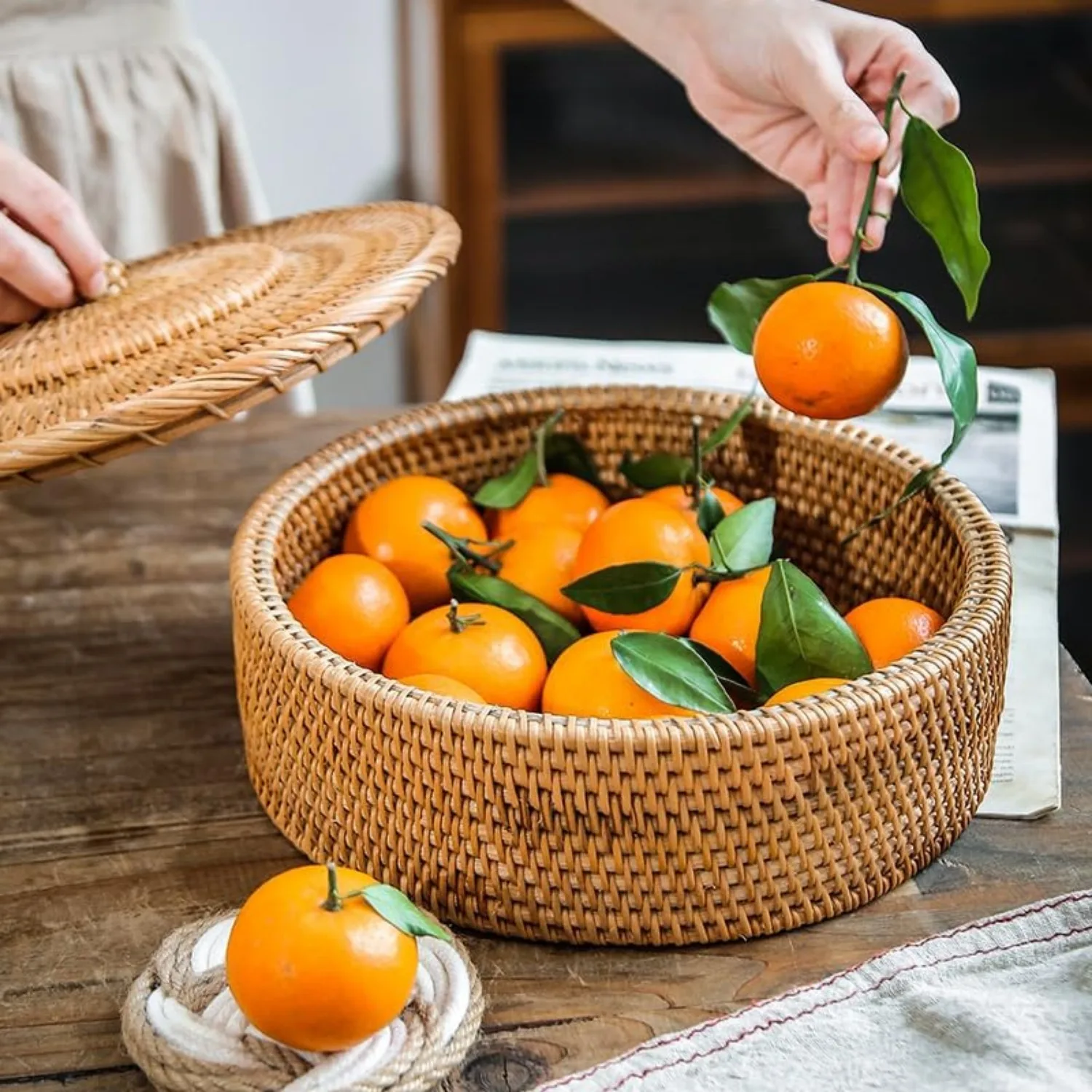
Dining Areas: Creating an Inviting Modern Atmosphere with Wicker
The dining area presents perfect opportunities to incorporate wicker’s warmth while maintaining a contemporary aesthetic. Wicker dining chairs offer a compelling contrast to many modern table styles:
- Pair natural wicker chairs with a sleek marble or glass dining table
- Combine black wicker chairs with a warm wood table for balanced contrast
- Create visual interest with wicker head chairs and upholstered side chairs
Scale matters significantly in dining applications—look for wicker chairs with proportions that align with your table height. Contemporary wicker dining chairs typically feature more streamlined profiles than their traditional counterparts, with tighter weaves and cleaner lines.
In kitchen settings, wicker bar stools introduce organic texture at counter height. Consider backless wicker stools for a clean look that slides neatly under counters, or select high-back wicker stools for more substantial visual impact.
For those who prefer subtle wicker integration, dining accessories offer the perfect solution. Wicker baskets handles provide functionality for serving bread, fruit, or condiments while contributing to your modern organic aesthetic.
Bedrooms: Crafting a Serene Modern Retreat with Textural Wicker
The bedroom benefits tremendously from wicker’s softening influence, creating a serene atmosphere that maintains modern sophistication:
- A wicker headboard serves as a stunning focal point against crisp bedding
- Wicker bedside tables combine storage and style in a compact footprint
- A wicker bench at the foot of the bed adds functionality and textural interest
When styling a modern wicker headboard, opt for simple, high-quality bedding in solid colors or subtle patterns. This approach allows the wicker’s texture to become a feature rather than competing with busy textiles.
For a contemporary look, pair natural wicker bedroom pieces with:
– Matte black lighting fixtures
– Simple white or flax-colored bedding
– Minimalist artwork in complementary tones
– Subtle metallic accents in brass or blackened bronze
Bedroom storage presents another opportunity for wicker integration. Effortless laundry organization wicker baskets bring both functionality and beauty to the bedroom environment, tucking neatly under bedside tables or inside closets while maintaining design consistency.
Lighting: Illuminating Modern Spaces with Wicker’s Organic Texture
Wicker lighting fixtures create some of the most dramatic modern applications for this versatile material. The interplay of light through woven patterns creates captivating shadows and warm ambiance:
Oversized wicker pendant lights make stunning dining table centerpieces, particularly in rooms with high ceilings. The substantial scale creates impact while the woven construction keeps the piece from feeling heavy or overwhelming.
For a more subtle approach, consider table lamps with wicker bases or shades. These introductions work beautifully on contemporary side tables or modern console tables, creating pools of warm light enhanced by wicker’s texture.
The density of the weave significantly impacts the lighting effect—tighter weaves create more diffused, gentle illumination, while open weaves create dramatic shadow patterns. Consider how these different effects might enhance your space.
Clustering multiple smaller wicker pendants at varying heights creates a contemporary installation effect that works beautifully in stairwells or entryways. This approach transforms simple wicker lighting into a modern art statement.
Round wicker baskets offer inspiration for the circular forms that work so effectively in lighting applications, demonstrating how traditional forms can be reimagined for contemporary contexts.
Wicker Accents: The Art of Subtle Modern Detail
Not every wicker introduction needs to be a major furniture piece—subtle wicker accents can transform a space while maintaining a clean modern aesthetic:
- Arrange geometric wicker baskets on floating shelves for organized storage
- Place wicker catchalls on entryway consoles for keys and small items
- Use wicker trays to corral objects on coffee tables and countertops
- Add wicker planters to showcase houseplants with complementary texture
The key to modern styling with smaller wicker pieces lies in thoughtful arrangement and restraint. Consider grouping similar wicker items for impact, or distributing them strategically throughout the space as a recurring textural element.
In bathrooms and kitchens, functional wicker pieces elevate everyday storage. Wicker waste baskets transform a utilitarian necessity into a design element, while tissue box covers and vanity organizers bring cohesive texture to these spaces.
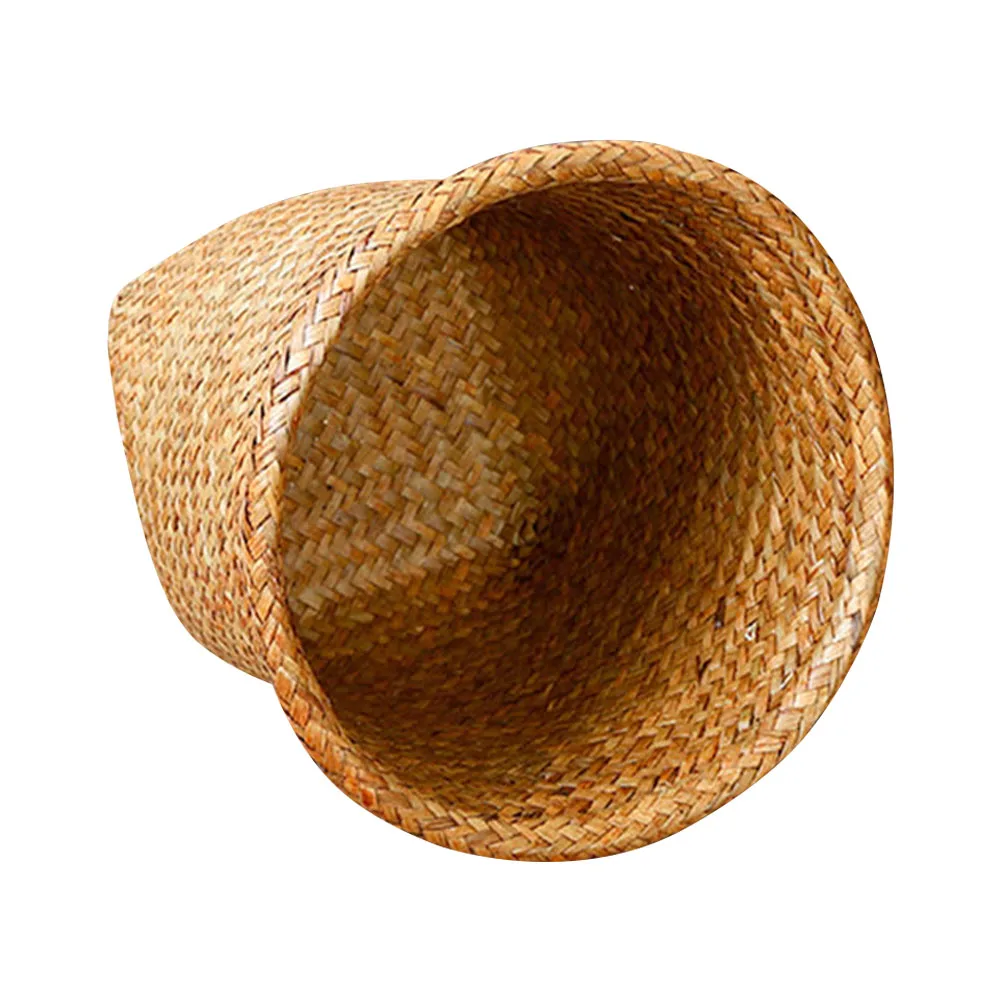
Innovative Applications: Unexpected Ways to Incorporate Wicker
Beyond traditional furniture and accessories, contemporary designers are finding innovative ways to incorporate wicker into modern interiors:
Architectural elements represent one of the most exciting frontiers for modern wicker. Consider:
– Room dividers that filter light while defining spaces
– Wicker-fronted cabinet panels that add textural interest
– Wall installations that function as three-dimensional art
– Ceiling treatments that create visual interest overhead
Custom applications allow for truly unique modern interpretations of wicker. Working with artisans to create built-in wicker elements or one-of-a-kind pieces ensures your space stands apart while maintaining design integrity.
Even small architectural details can make an impact—consider wicker-wrapped mirror frames, door inserts, or stair risers as unexpected applications that maintain a sophisticated modern sensibility.
For those who enjoy hands-on projects, the best wicker baskets laundry organization techniques can inspire creative repurposing. Simple wicker baskets can be transformed into pendant lights, wall storage, or decorative objects with minimal modification.
Revitalizing Existing Wicker: Modern Makeovers for Heritage Pieces
Inherited or vintage wicker pieces often have excellent bones but outdated styling. Fortunately, these pieces respond beautifully to thoughtful updates:
Paint Transformations:
1. Clean the piece thoroughly and repair any damaged sections
2. Apply a primer specifically formulated for wicker surfaces
3. Choose a contemporary color (matte black, navy, or olive create sophisticated results)
4. Apply multiple light coats rather than one heavy coat
5. Finish with a protective sealant appropriate for the intended use
Cushion Updates:
1. Remove outdated fabric and assess the cushion’s condition
2. Replace foam if compressed or damaged
3. Select contemporary fabrics (performance velvet, linen blends, or textured solids)
4. Create clean-lined, tailored cushions without excess frills
5. Consider contrasting welt or edge details for a refined finish
Hardware updates can dramatically impact a piece’s appearance—replacing dated brass clips with matte black or brushed nickel creates an immediate contemporary shift. Similarly, replacing woven elements that are damaged with tighter, more consistent patterns updates the overall impression.
Our wicker laundry hampers demonstrate how traditional forms can be reimagined with modern proportions and finishes, creating pieces that honor wicker’s heritage while embracing contemporary aesthetics.
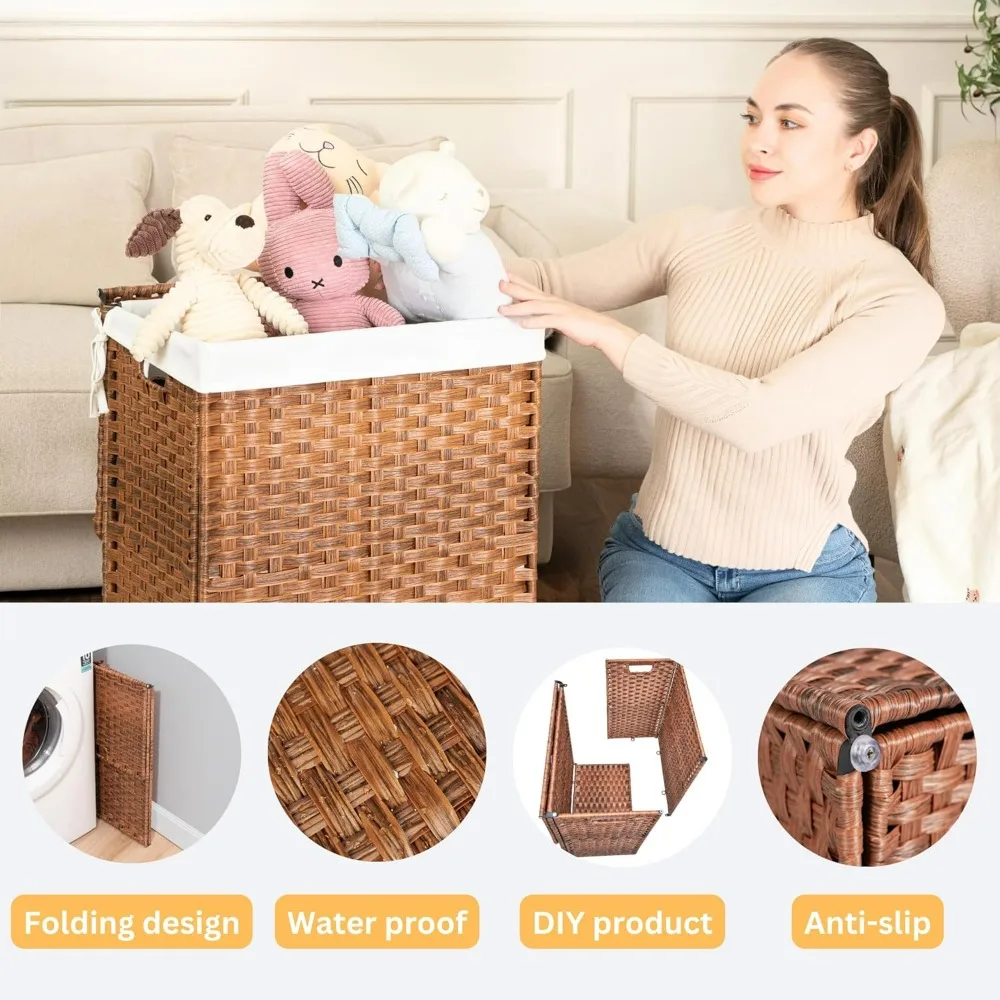
Avoiding Common Pitfalls: Styling Mistakes and Their Solutions
Even with the best intentions, several common mistakes can undermine wicker’s modern potential:
Problem: Creating a “theme” effect with too many matching wicker pieces
Solution: Distribute wicker thoughtfully throughout the space, mixing with other materials. Select pieces with different weave patterns and scales for variety.
Problem: Choosing overly rustic or casual wicker styles for a modern setting
Solution: Look for pieces with clean lines, precise weaving, and contemporary proportions. Avoid pieces with excessive decorative details.
Problem: Neglecting the care requirements of natural wicker
Solution: Position natural wicker away from direct sunlight and excessive moisture. Regular how clean wicker baskets maintenance keeps pieces looking fresh.
Problem: Creating a dated “coastal” or “bohemian” effect
Solution: Avoid pairing wicker with shells, rope details, or excessive macramé. Instead, combine with sleek modern elements and a contemporary color palette.
Problem: Selecting incorrect proportions for the space
Solution: Consider scale carefully—oversized wicker can overwhelm small spaces, while pieces that are too small may appear insignificant.
By avoiding these common pitfalls, you’ll create a sophisticated integration of wicker that enhances rather than compromises your modern aesthetic.
Black Wicker Baskets, Rattan Storage Baskets, Tall Wicker Baskets, Wicker Shelf Baskets, Woven Storage Baskets
5-Tier Distressed Black Wood Frame Storage Tower with Removable Wicker Baskets for Home Organization$715.80 Select options This product has multiple variants. The options may be chosen on the product pageRattan Shelf Baskets, Rattan Storage Baskets, Small Wicker Baskets, Square Wicker Baskets
Square Plastic Wicker Storage Baskets Set of 3 with Collapsible Design for Cube Storage Organization$185.47 Select options This product has multiple variants. The options may be chosen on the product pageWicker Baskets with Handles, Wicker Storage Baskets, Woven Storage Baskets
$137.92 Select options This product has multiple variants. The options may be chosen on the product page- $119.02 Select options This product has multiple variants. The options may be chosen on the product page
Wicker Hampers with Lids, Wicker Laundry Baskets with Lids, Wicker Laundry Hampers
$127.33 Select options This product has multiple variants. The options may be chosen on the product pageRattan Shelf Baskets, Rattan Storage Baskets
$345.47 Select options This product has multiple variants. The options may be chosen on the product page
Frequently Asked Questions About Modern Wicker Styling
What types of wicker work best in minimalist or Scandinavian-style interiors?
For minimalist spaces, look for wicker with simple, geometric patterns and natural or whitewashed finishes. Pieces with clean lines and restrained designs complement Scandinavian aesthetics particularly well. Avoid ornate or heavily textured wicker in these settings.
How can I maintain the quality and appearance of wicker furniture over time?
Regular dusting with a soft brush prevents buildup in the weave. For deeper cleaning, use a slightly damp cloth with mild soap, ensuring the piece dries thoroughly. Keep natural wicker away from direct sunlight and extreme humidity, which can cause fading and weakening of the fibers.
Is outdoor wicker suitable for indoor modern spaces?
High-quality synthetic outdoor wicker can work beautifully indoors, particularly in high-traffic areas or homes with children and pets. Look for pieces with refined weaving patterns and sophisticated frames designed specifically for indoor-outdoor use.
What’s the difference between rattan and wicker, and which is better for modern styling?
Rattan is a specific material (a type of palm), while wicker refers to the weaving technique used to create pieces. Both can work in modern settings, but pieces labeled “rattan” often feature solid elements that create a more substantial presence, ideal for statement furniture.
How many wicker pieces are too many in a single room?
Rather than focusing on a specific number, consider visual weight and balance. In most modern spaces, one or two substantial wicker pieces (like a chair or pendant light) or several smaller accessories (like baskets or trays) create the right balance without overwhelming the space.
For larger storage needs that maintain a modern aesthetic, our wicker storage trunks provide substantial pieces that balance form and function beautifully.
At Tidy Treasure, we believe that wicker’s renaissance in modern interiors represents the perfect marriage of natural warmth and contemporary design—organizing life beautifully, one basket at a time.

